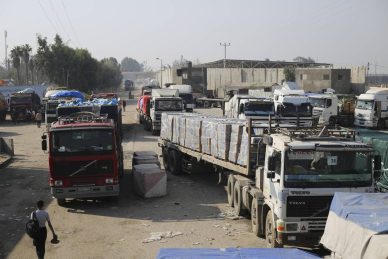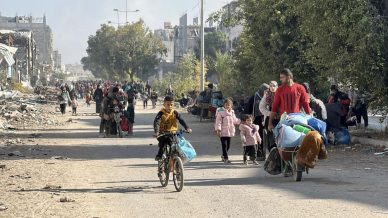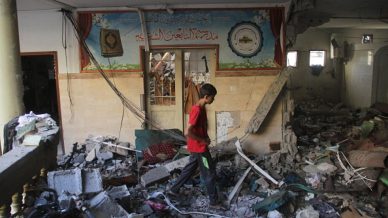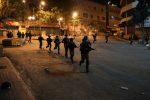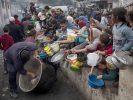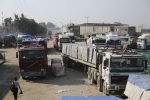GAZA, (PIC)
The young boys Muhammad, Suwar, and Jihad gather around their grandmother in front of the family tent in the Al-Bassa area west of Deir Al-Balah city in the central Gaza Strip, waiting for pieces of za’atar manakish. Their grandmother, Umm Tariq, says she prepares the manakish with whatever flour and za’atar she can find, without olive oil, hoping to quell their hunger.
Umm Tariq confirms to the PIC correspondent that her three grandchildren ask her for a lot of food and drinks, but there’s little she can do; there’s hardly anything in the markets to buy, and if something is available, it’s at exorbitant prices. So, she resorts to making manakish, a legacy of the Palestinians, and she insists on preparing it as a single meal throughout the day. “Hunger is hitting us hard, and securing a piece of bread has become a battle.”
When her grandson Muhammad (7 years old) spoke to our correspondent, tears welled in his eyes as he mourned his uncle and his children, who were martyred in the genocide on March 1st. He says, “They deprived us of everything: play, school, and life, and now they’re depriving us of food.” He mentions that they eat manakish daily, “We crave meat, chicken, and sweets.”
Since October, 2023, the number of trucks allowed into Gaza by Israel has dropped to an all-time low, leading to a severe shortage of goods in the markets. International organizations have warned of the risk of famine spreading in southern Gaza, similar to the situation in the north. Our correspondent notes that the price of a 25-kilogram bag of flour is $50 or more, and various goods have skyrocketed in price, which is entirely disproportionate to the purchasing power amid the ongoing genocide, while local sources estimate that about 90% of goods are missing from the markets.
This has driven residents to search for ways to alleviate their children’s hunger, with few options other than some canned goods, which are also rising in price, and za’atar manakish. The United Nations reports that humanitarian aid reaching Gaza faces significant obstacles, especially in the northern areas. UNRWA states that more than 1.8 million Palestinians across Gaza are suffering from high levels of acute food insecurity classified as Phase 3 in the crisis scale and above.
The UN agency confirmed that acute malnutrition is ten times higher than it was before the war. Recently, Israel has significantly reduced the volume of aid entering Gaza, with clear signs of famine visible in southern and central Gaza, similar to what is happening in Gaza City and the northern sector.
Israel controls the movement of exports to Gaza by fully controlling the crossings, preventing the arrival of goods and food supplies, and using starvation as a political tool to pressure Palestinian resistance. In its latest report, the UN affirmed that Israel is denying Palestinians in Gaza food and means of survival.



